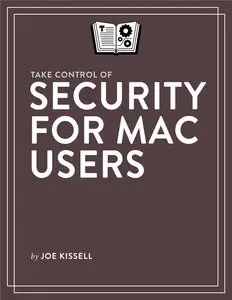Take Control of Security for Mac Users by Joe Kissell
English | 24 May 2015 | ASIN: B00YNXRJNQ | 178 Pages | EPUB/MOBI/PDF (True) | 10.83 MB
English | 24 May 2015 | ASIN: B00YNXRJNQ | 178 Pages | EPUB/MOBI/PDF (True) | 10.83 MB
Do credit card fraud, hacking, identity theft, and online shopping and banking risks concern you? How about the dangers of malware, phishing, and Wi-Fi sniffing when you use your Mac? You are not alone - these dangers top the lists of security concerns in many surveys. But you needn't unplug to stay secure, no more than you should barricade yourself in your home to keep from being mugged. Instead, you can take common sense precautions to reduce the risks and avoid the harm that could befall you, your Mac, and your data.
Take Control of Security for Mac Users is a calm, friendly look at the topic, designed to help you determine your risk level (from 1-4) and provide sensible recommendations for increasing your security without causing undue inconvenience.
In particular, you'll find help with:
Determining your risk level (from 1-4)
Implementing essential quick security fixes
Identifying and avoiding phishing attempts
Controlling access to your Mac via a firewall
Managing local access to your data with sensible user accounts
Sharing Mac resources like screens and files safely
Securing your home network and working securely on someone else's network
Protecting your Mac's data from snoops and thieves with FileVault
Sharing/transferring encrypted files
Keeping your iCloud data (such as email and photos!) safe
Preventing data theft with encrypted disk images, files, and folders
Deleting data securely to prevent unexpected leaks
Deciding whether to use anti-malware software
Improving passwords to block unauthorized access
Perhaps most important, you'll also find advice about what to do if something bad happens, with suggestions about how to recover from data loss, a malware or phishing attack, a network intrusion, or identity theft.



